Hello and welcome to another post about building something! My favorite moments in life are when you have a series of roadblocks/problems, and you ‘solve’ them by combining them together with some unconventional thinking. My first experience with this was when I learned about the catacombs under Paris. Long story short, the city had a lack of structural support under the city (due to taking the limestone to make buildings in the city…) and overflowing cemeteries. Use the bones to build supports under the city, and boom two problems solved for the price of one! Learning about this type of problem solving made my engineering side go all giddy, and I’ve never been the same since 😁 When I found out that hügelkultur could solve a few of our gardening problems, I was unsurprisingly very happy to learn about it.
One of the main goals of the homestead is to supply as much of our own food as possible. The plan was to grow a lot of fruits and vegetables, but the piece of land we are in charge of presents some challenges. First, the soil is mostly clay. While that holds a lot of great nutrients, it can be incredibly difficult to break up so that the plant roots can penetrate it. I was attempting to remedy this with the lazy garden building, but creating compost this way would only give us a little bit of soil depth in the short term. The second problem is the topography of the property. We have nice higher elevations for the house, and wetlands in the lower elevations that are great for biodiversity. This means though, that the property is sloped between these two sections. I’ve been reluctant to plan for a garden on the slope because of the water run off. I figured at best the water would flow out of the garden where it is needed, and the worst case is that this water movement also washes our seeds/plants away with it. The final initial challenge is that we are not up there frequently enough to keep plants adequately watered. The last one is a short term problem, but when you can reduce watering and increase water retention in your garden it is usually a positive.
So how do we tackle this problem? Enter the hügelkultur of course! Hügelkultur is a German word that means mound culture or hill culture. At its most basic it is just a raised bed. The difference between a hügelkultur and a standard raised bed is what you build it with and the location where you build it. The biggest difference in my opinion, is that with a hügelkultur one uses large logs as the bottom few layers. The size of the logs should decrease as you move further up the pile, and we will also mix in some small sticks/twigs along with grass/leaves that will break down much faster than the logs. Large logs are not usually used in composting because of the time it takes for them to break down. Well lucky for us, we won’t be living up there for a few years so the timing is perfect 🙂 While the logs are slow to break down, they are really good at retaining water. If we build this properly it should be ‘self watering’ aside from times of extreme drought. In order to take advantage of this water retention the location of the hügelkultur is very important. It is actually better to place this on a slope as it will capture a lot of the water runoff. Just make sure to build it perpendicular to the slope to maximize water exposure/capture. Finally, just like all other composting materials, as the logs and other plant materials break down they will provide the nutrients for your growing plants.
Learning about the hügelkultur was great, but I needed a little motivation to start building it. To be honest I had gotten pretty lazy this year using Archer’s torn CCL as a blanket excuse. My younger brother has recently been getting really into physical fitness and the homesteading plan. When he reached out to do some work on the homestead, it turned out the timing was perfect to get me out of my funk. Thanks little bro! 😊❤️ With an extra set of muscles available and renewed sense of purpose, we got started on our first hügelkultur this year!
I already had a pretty good idea of where we would place this, and it didn’t take long to pick out a spot. It can be difficult to show you the locations of things on the homestead with pictures I have to take on the ground. Lucky for us, the county takes aerial photos every couple of years. These photos are really nice to help you all better understand the homestead, and it gives me an opportunity to plan out where we will build things. I wanted to start this a while ago, but I really wanted one that had the one acre of trees cleared that will be our living space. Until recently, the newest photo was taken RIGHT before we got the trees cleared. Unfortunate timing, but we were not building for a few years so it didn’t really matter! With the updated aerial photos, I can now start to show a more detailed plan of where we want to take the homestead! Give me some time, but I will definitely get something put together in the not too distant future. For now though, we will just show where the hügelkultur will be placed 😊
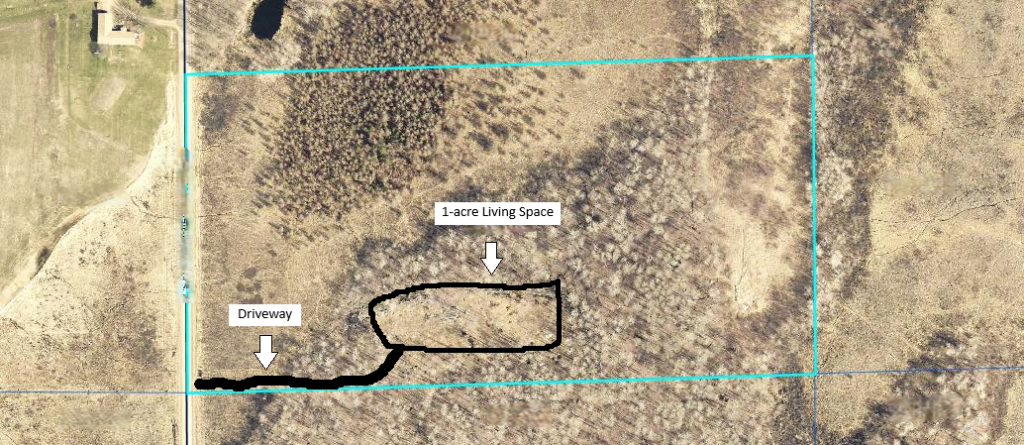
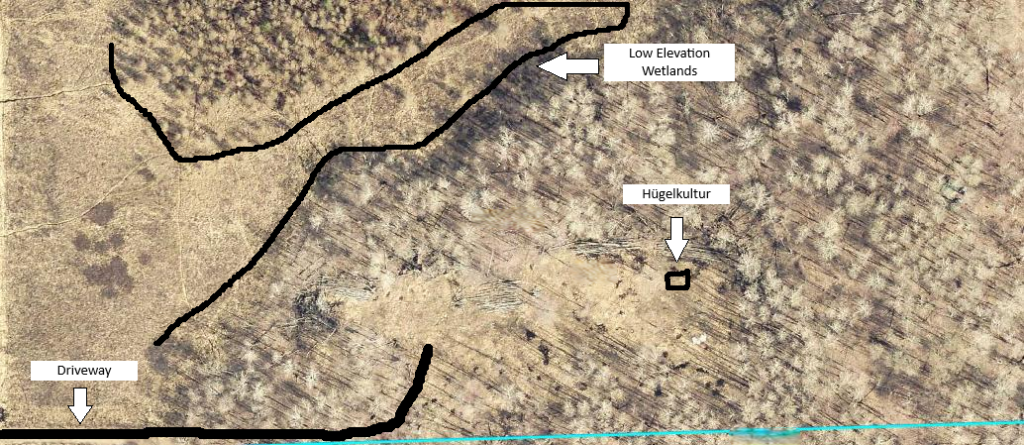
With a location picked, it was time to get to work! Since the dirt is primarily clay, the most difficult part is loosening the soil. For this I decided to ditch the shovel and start with a mattock. It was still a lot of work, but we eventually got an area ~3’x6’ cleared.
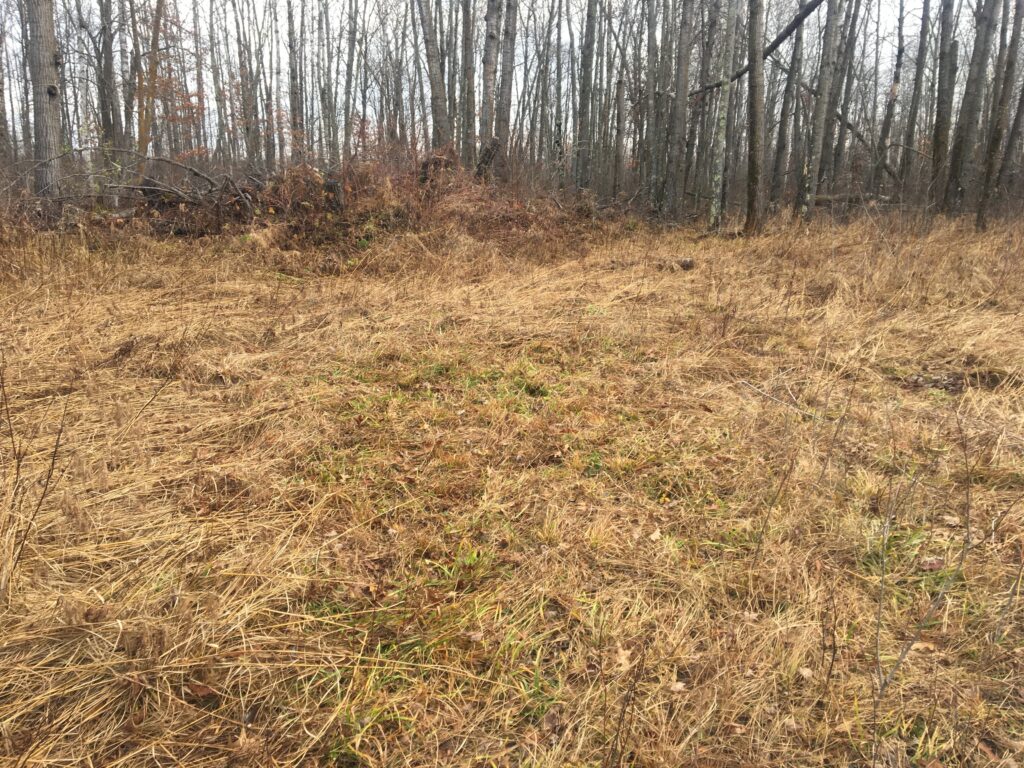
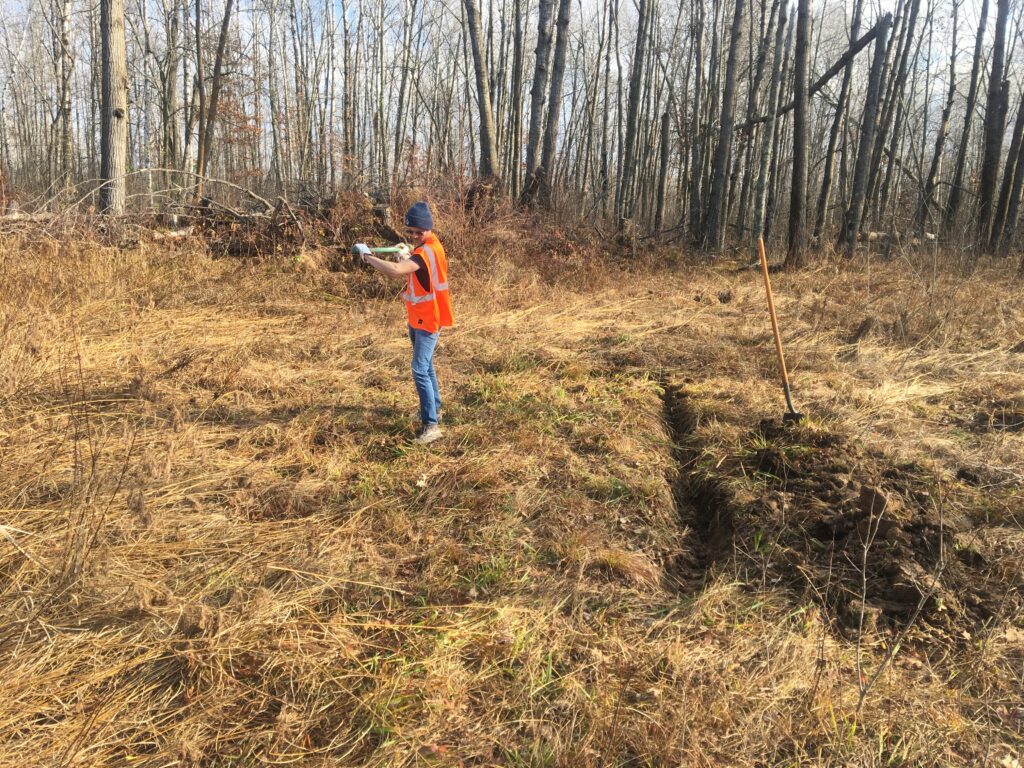
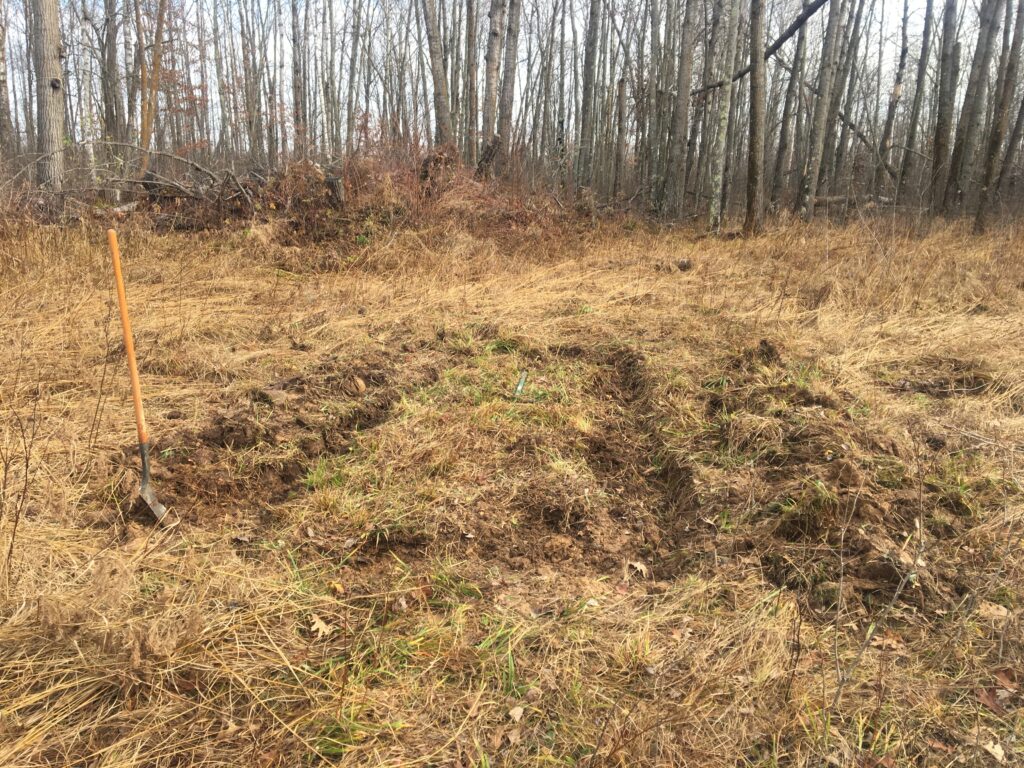
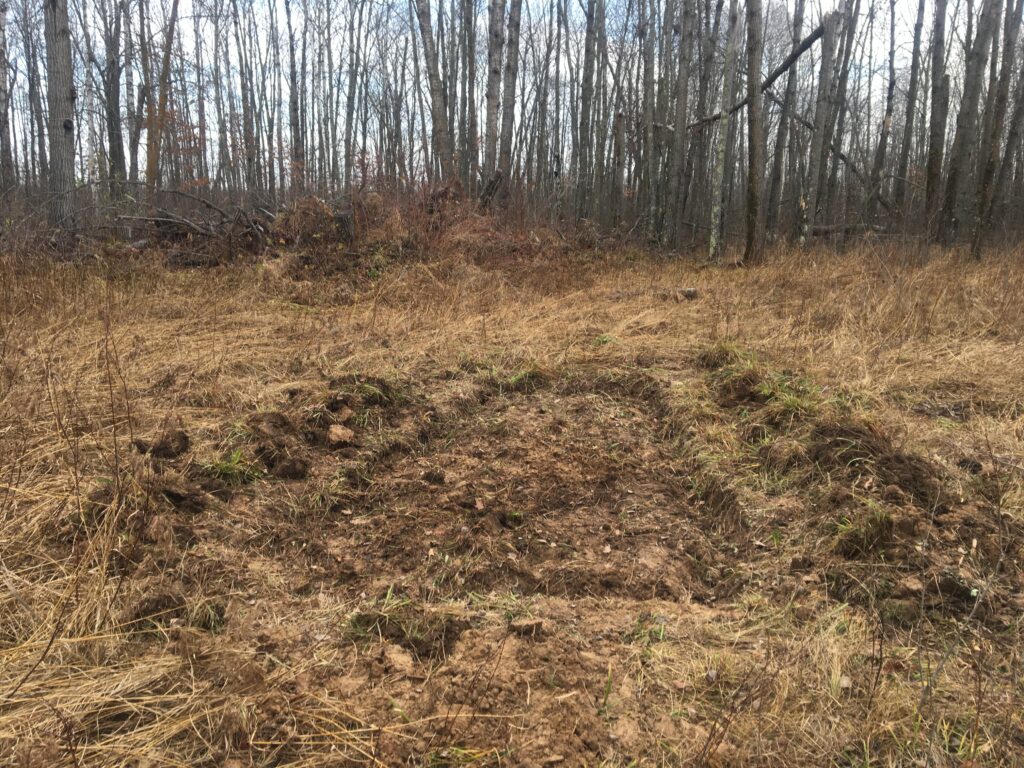
We gathered a few logs to start the hügelkultur, but we were pretty tired from clearing the grass. We decided to call it a day and I would continue it later.

When I came back a few days later (and after some rain/snow) it gave me a great opportunity to highlight how hard it is for the water to seep into the clay. This also shows exactly why we are building the hügelkultur! The hope is that the logs will absorb this water and release it when the plants need it.

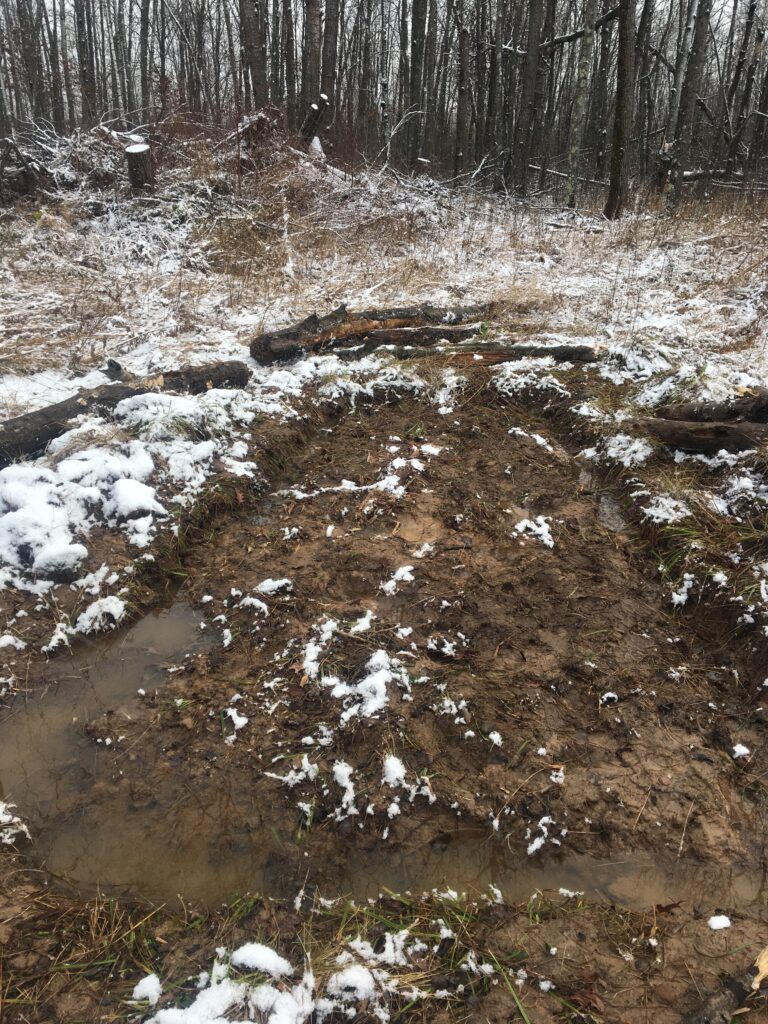
I had collected more cardboard at home, so I decided to take that up and make that a the bottom layer of the hügelkultur. From there it was time to add in the logs. As with most structures, we start with the largest pieces on the bottom. After a good layer of larger logs I could start to mix in some smaller pieces of wood.
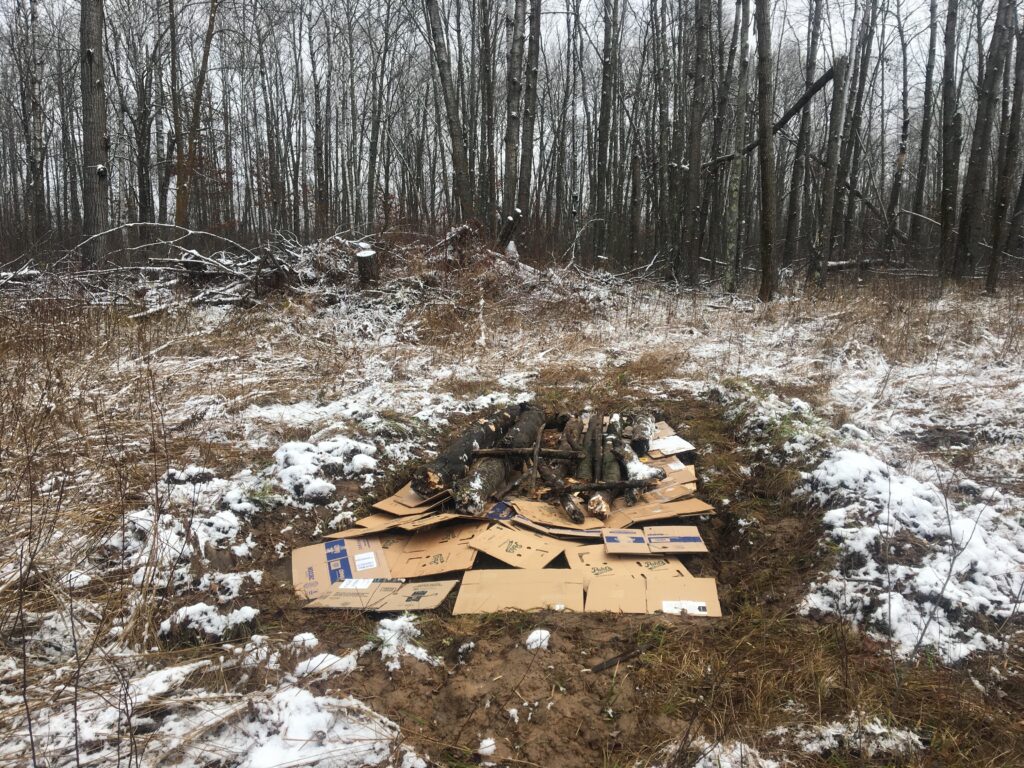
I stopped up again to do some other work, and was compelled to add to the pile 😁 I got the pile up to about 2-3’ in height which is about half as high as it should be. At this point winter temperatures were setting in, so this is as far as we get for now. In the spring I’ll work to get a few more logs on there, but pretty soon I’ll need to mix in some grass/leaves. The goal is to get the pile to about 6’ in height. After we get there I’ll need to cover the whole pile with soil. I’m planning to do my best with the soil on the property, but at this point I’m fairly certain I will need to bring in some topsoil that doesn’t have as much clay in it. I’m pretty excited to finish this project, so look for more updates in early spring!
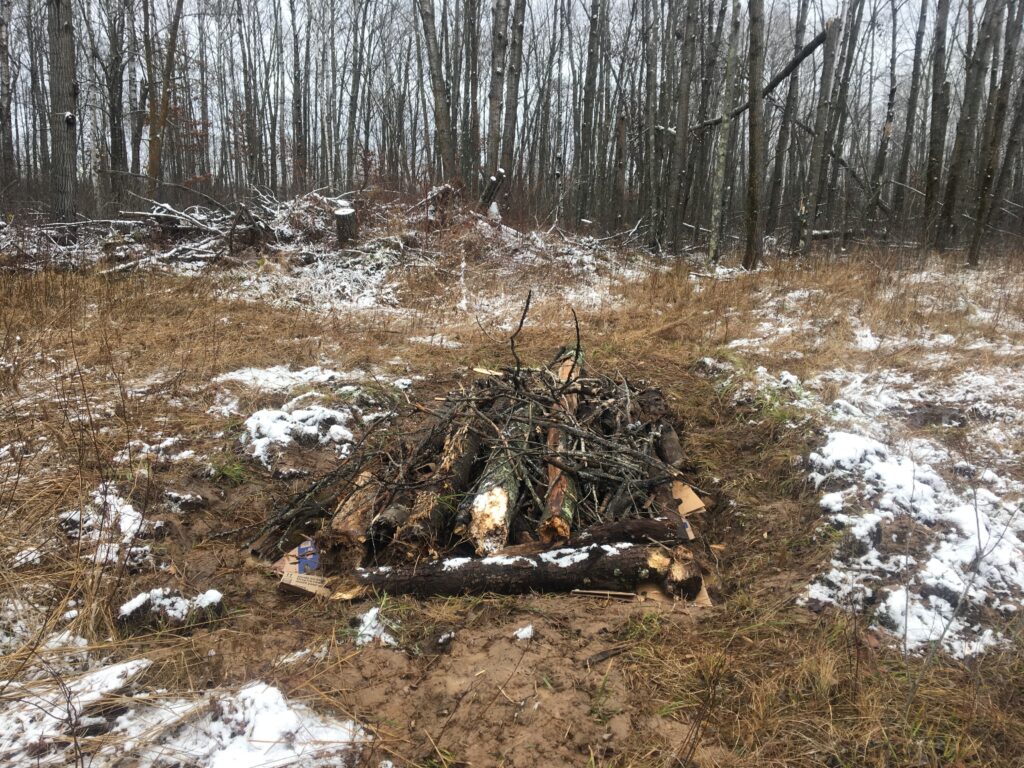
The final piece of the puzzle is determining what we will grow in the hügelkultur. To me the answer is very obvious. Strawberries. My wife and I both love strawberries, and there is nothing quite like a fresh strawberry. Will the hügelkultur work as planned? Will strawberries thrive or struggle in this setup? Who knows, but I am certainly going to try to build a strawberry mound to find out! 😁 That’s it for now on the hügelkultur build. I’ll keep working at it as time allows, and should get a good amount of work done in the spring. Take care out there and look for an update on the indoor herb garden here soon!
